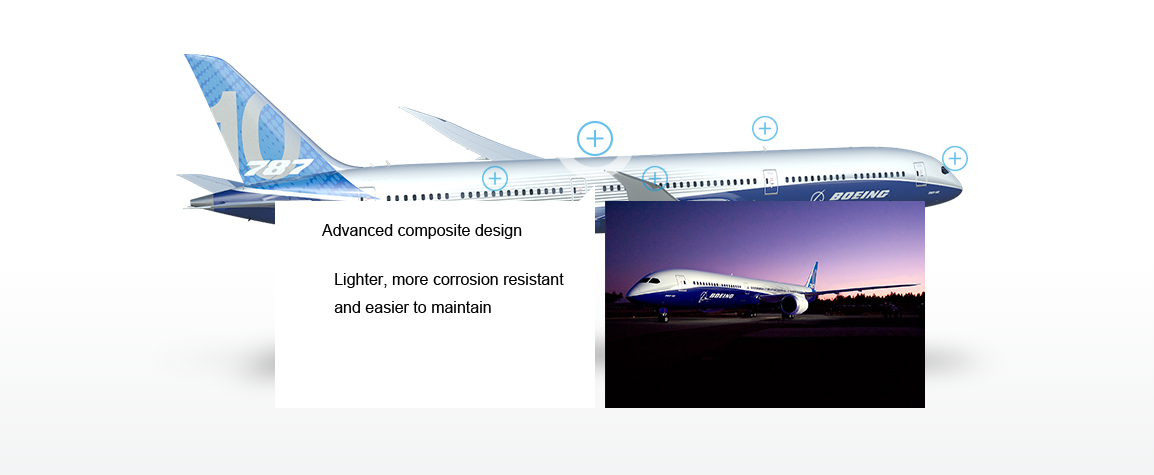Composite materials, especially those made of glass fiber, carbon fiber and Kevlar fiber, have been widely used in the aircraft industry. They are stronger and lighter than aluminum, the most commonly used metal in aircraft fuselages. Composite materials are so named because they consist of two or more materials. The composite material used in aircraft consists of fibers suspended in an epoxy resin matrix.
Fiberglass composite material is a composite material made of glass fiber and epoxy resin. It was first used by Boeing aircraft in the 1950s. The Boeing 787 Dreamliner is the first commercial aircraft manufactured using 50% composite materials (mainly carbon fiber composite materials); the first 787 launched by ANA in October 2011. The rest of the aircraft is mainly made of aluminum, titanium and Steel composition.
Composite materials have revolutionized the aviation industry, but their use does bring some engineering and maintenance challenges. The main advantages and disadvantages of composite materials used in aircraft are:
Advantage
Lightweight is the biggest advantage of using composite materials. Lightweight aircraft are more fuel efficient because it requires less fuel to propel the fuselage forward. The strength of composite materials is also incredible, so the strength / weight ratio (also called specific strength) is higher than the metal used to make aircraft. In addition, they have excellent compression resistance and are not easily broken under tension.
Composite materials are not easily corroded by irritating chemicals and are resistant to many highly reactive chemicals. They can also cope with various temperature changes and exposure to severe weather.
Another big advantage of composite materials is their design flexibility: they can be made into rough shapes. A single composite material with a strange shape can replace many other materials. This useful feature can reduce maintenance and therefore the cost over the life of the aircraft.
Once the composite structure is formed, it will maintain its shape and size. This is important in the aircraft industry because it means that critical parts of aircraft made of composite materials will not grow, shrink or deform as environmental conditions change.
Deficiency
For aircraft and parts manufacturers, the biggest disadvantage of composite materials may be the higher initial cost compared to metals. The higher cost is mainly due to the price of the fiber and the complex process required to manufacture the final material. In addition, it is difficult to determine when the internal structure of composite aircraft components has been damaged. This makes inspection difficult and costly.
One problem that occurred during the inspection process was the delamination of the composite material. The biggest reason for delamination is the impact on composite parts. Water may penetrate a layered part, and as the water freezes and thaws, the problem becomes more serious.
Standard aircraft composite materials are not conductive, so unlike aluminum, it cannot prevent direct lightning strikes to the aircraft’s fuel tank. By incorporating wire mesh into the composite material, the 787 problem can be solved.
Finally, the resin used for composite materials will become weak at temperatures as low as 150 degrees Fahrenheit, and temperatures exceeding 300 degrees may cause aircraft failure. When the composite material burns, it emits toxic fumes and particles into the air, posing a health risk. For all these reasons, fire protection is essential for aircraft made with composite materials.
Media Contact
Company Name: Huangyan Shuangsheng Plastic Mould Co., Ltd.
Contact Person: Media Relations
Email: Send Email
Phone: 86-576 84317680
Country: China
Website: https://www.suase-plastic-mould.com/

